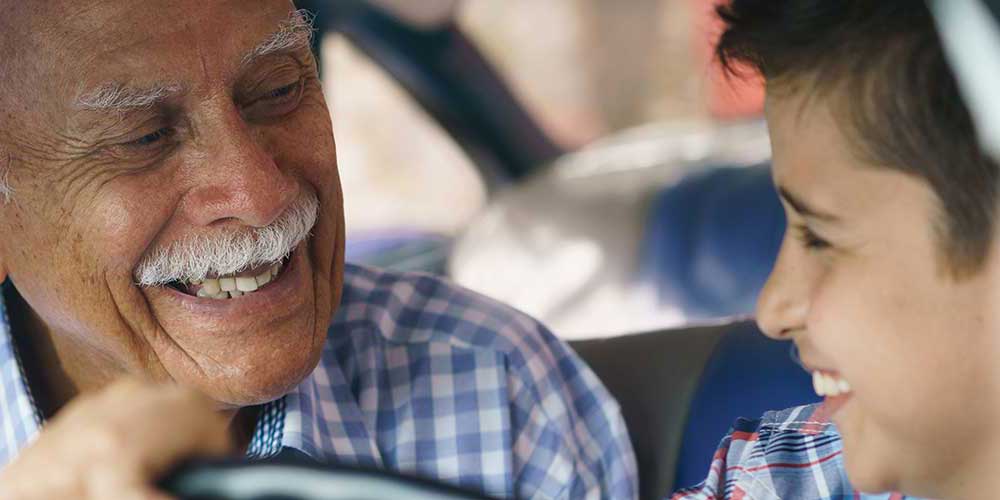By: Robert Tate
Photos courtesy of the National Automotive History Collection/Robert Tate's collection
Posted: 03.29.2016
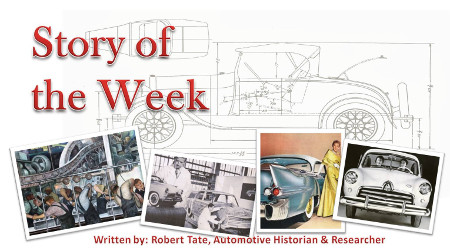
Richard A. Teague was born on Dec. 26, 1923 in Los Angeles Calif. Teague was one of the best automotive industrial designers in America.
Teague’s great automotive journey started in the early 1930s when he had become a child movie actor starring in “Our Gang/Little Rascals” comedy series. After his acting career, he started building hand-crafted model airplanes while a student in elementary school. Later, Teague would become a regular within the hot rod circles along with many other hot rod enthusiasts.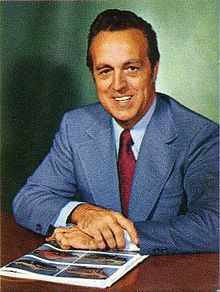 Richard TeagueTeague, once said that he “had a little gasoline in the blood,” to explain his passion for cars. During World War II, Teague was exempt from service due to his visual impairment, a medical condition he had received as a result of being involved with an unfortunate automobile accident. After graduating from Susan Miller Dorsey High School in 1942, he began working as an aircraft technical illustrator for the Northrop Corporation. During his time there, Teague had designed the XP-61 Black Widow and the Flying Wing projects.
Richard TeagueTeague, once said that he “had a little gasoline in the blood,” to explain his passion for cars. During World War II, Teague was exempt from service due to his visual impairment, a medical condition he had received as a result of being involved with an unfortunate automobile accident. After graduating from Susan Miller Dorsey High School in 1942, he began working as an aircraft technical illustrator for the Northrop Corporation. During his time there, Teague had designed the XP-61 Black Widow and the Flying Wing projects.
It was during that particular time that the late Mr. Paul Browne suggested to Teague that he start taking night classes at the Art Center College of Design, one of the best art schools in the country, in order to pursue the passion of automotive illustration that started during his childhood.
That passion would eventually land Teague on the General Motors’ Design Team in 1948. He was interviewed by one of GM’s great designers – the late Frank Hershey. This created a memorable time in Teague's life history to start working for such a prestigious company and being a part of the General Motors design team.
During his time at GM, Teague began to forge his own legacy in the history of automotive design. After two years in the advanced styling studios of Oldsmobile and Cadillac, he joined Packard in 1950 as chief stylist.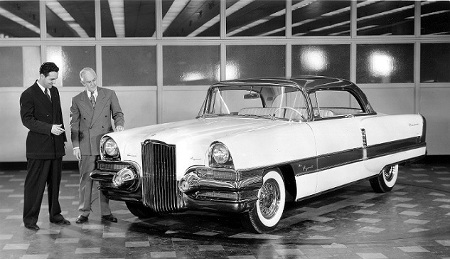 1955 Packard RequestWhile at Packard, Teague worked under the guidance of the late James Nance. It was Teague who helped designed several Packard show cars which included the 1953 Balboa and the 1955 Packard Request.
1955 Packard RequestWhile at Packard, Teague worked under the guidance of the late James Nance. It was Teague who helped designed several Packard show cars which included the 1953 Balboa and the 1955 Packard Request.
However, it was the restyling of the entire 1955 Packard line that truly made history. Teague had clearly showed the automotive world his great and significant talent. The cathedral tail lights of the 1955 Packard was a remarkably stylish design that influenced the industry for years after.
The last Packard show car that Teague helped design was the 1956 Packard Predictor.
After Packard, Teague joined the Chrysler design team with the late Virgil M. Exner, who was recovering from a serious heart condition. Then in September of 1959, Teague went to work for the late Ed Anderson at the American Motors Corporation in Detroit.  The 1961 design team at American Motor Corp.Teague’s work with AMC during the 1960s cemented his status among great designers in the industry and his place in the history books.
The 1961 design team at American Motor Corp.Teague’s work with AMC during the 1960s cemented his status among great designers in the industry and his place in the history books.
At the time American Motors was suffering from an image design problem, and in 1962 Teague was appointed to director of automotive styling. Shortly thereafter Teague was named vice president of design in 1964.
After Teague's appointment, American Motors had some great looking designs highlighted by the 1964 Rambler American Classic along with the 1965 Marlin. Other popular models at the time included the AMX, Javelin, Gremlin and AMC Hornet. Teague was also responsible for the “greenhouse” design of the Pacer automobile.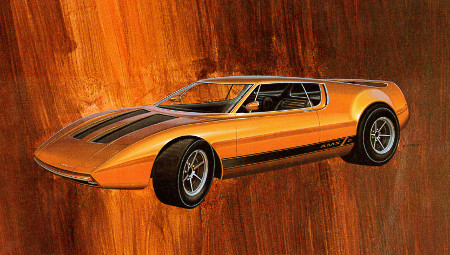
There was so much glass in AMC’s Pacer, that many questioned its overall appearance. However, the most popular models were the 1969 AMX prototype concepts which most consumers really liked and admired.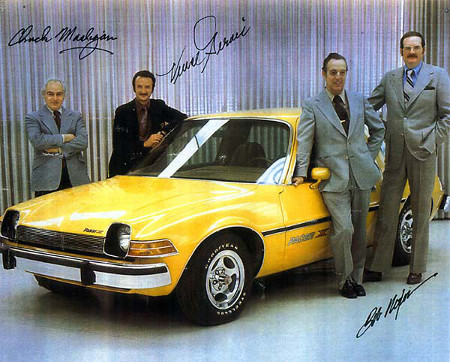 Designers for the AMC Pacer car including Richard Teague, frontThe body design proposals were purely Teague's ideas. The AMX II and III were great looking concept models, but to build such a model was too costly and Teague was heartbroken that his designs would not go into production.
Designers for the AMC Pacer car including Richard Teague, frontThe body design proposals were purely Teague's ideas. The AMX II and III were great looking concept models, but to build such a model was too costly and Teague was heartbroken that his designs would not go into production.
Teague said, “The only way they could have built more than the six prototypes was to do what Ferrari did with the 308 – keep tooling cost down and build in fiberglass in order to get the cars out.”
One of the last great production models from Teague’s career was the popular Jeep Cherokee (XJ) that was introduced in 1983.
In conclusion, Teague had a great passion for design and he loved classic automobiles as well. He was a great historian and collector and always had a great personality. Over the years, Teague had received many great awards such as the Chilton's Automotive Industries magazine who had named him the 1976 Man of the Year along with the Lifetime Design Achievement Award at the 1999 Eyes on Design show. Teague passed away on May 5, 1991.
On a special note, I knew him very well from the antique toy car shows from the early 1970s and 1980s and he was always a perfect gentleman and could share many great automotive stories. His automotive designs and great memories will always be a part of our automotive history and culture.
A special thanks to Robert Tate, Automotive Historian and Researcher, for contributing this story to the MotorCities Story of the Week Program. (Bibliography: Booth, Gene. “The Teague Touch,” Car Life magazine June 1964; Cunningham, Ed. “Honored Designer Richard A. Teague.” Detroit News. “AMC names Teague Director of Auto Styling,” Feb. 16, 1962; Bird II, W. David. “Automotive Renaissance Man Dick Teague,” Automobile Quarterly Volume 30, Number 2 Winter 1992.")
For further information on photos please visit http://www.detroitpubliclibrary.org/ or email This email address is being protected from spambots. You need JavaScript enabled to view it. Please do not republish the story and/or photographs without permission of MotorCities National Heritage Area.


